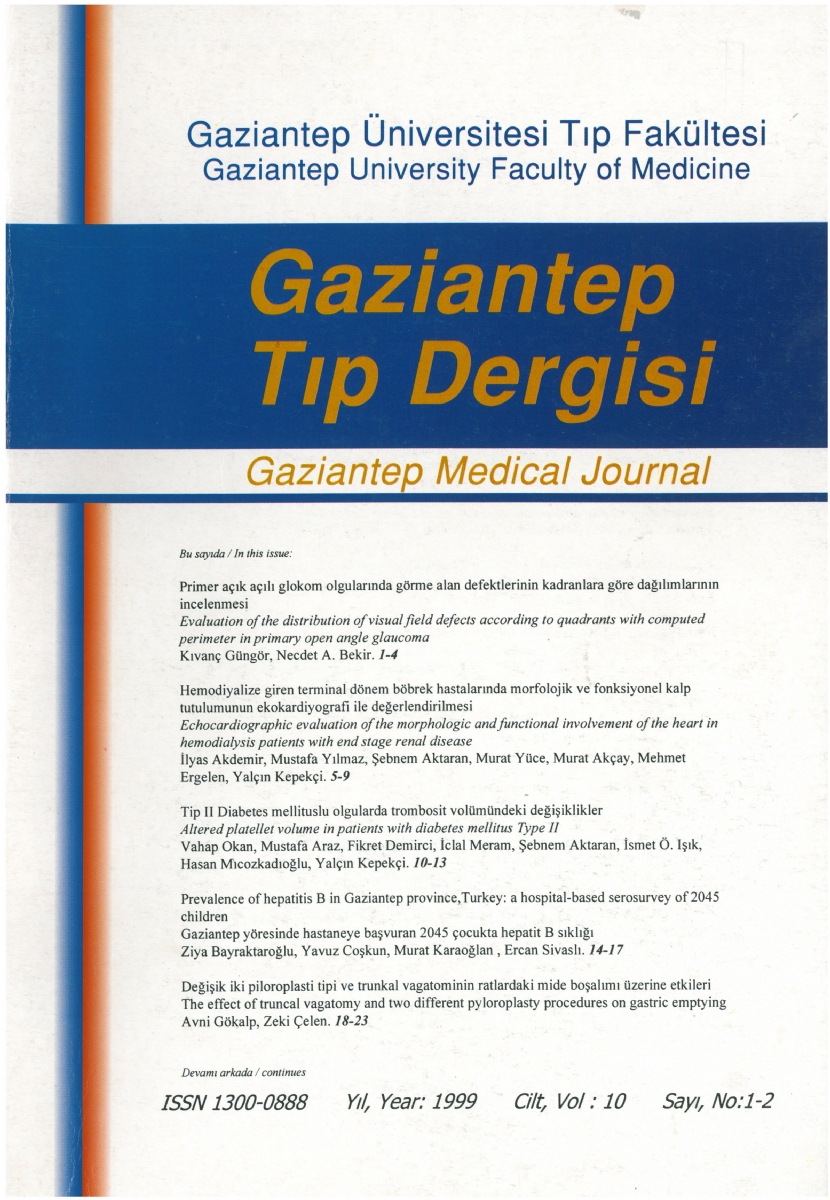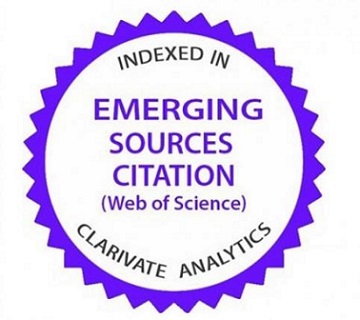Kinetic Properties of Human Erythrocyte Prolidase and Optimal Conditions for Prolidase Assay by Proline Colorimetric Determination
DOI:
https://doi.org/10.58600/eurjther.1999-10-1-2-1519-archKeywords:
Human erythrocyte, prolidase, kinetic properties, inhibitionAbstract
Prolidase (EC 3.4.13.9) is an iminodipeptidase that catalyses the hydrolysis of C-terminal proline or hydroxyproline containing dipeptides. it is involved in intracellular protein degradation, and apparently contributes to the conservation of iminoacides from endogenous and exogenous protein structures. Analysis of prolidase activity in human biological fluids and tissues has gained attention as a biochemical tool in acute and chronic liver diseases, adenocarcinoma of lungs and as a marker for fetal lung maturation and growth, in addition to long known genetic prolidase deficiency. in the present study, stability, activation and inhibition kinetics of human erythrocyte prolidase and optimal conditions for human erythrocyte prolidase assay were investigated. Level of proline, product of the enzymatic reaction was measured by Chinard's method. Human erythrocyte prolidase activity was stable tor six months at -10 °C. Preincubation of the enzyme at 37 °C with 1 mM MnCl2 provided appropriate activity.
Preincubation at 45 °C and 55 °C caused enzyme inactivation. After preincubation, prolidase activity was linearly related to incubation time up to at least two hours. Buffer ionic strength between 30-70 mM at pH 8.0 did not cause an obvious difference of prolidase activity. However pH changes between 7.0 and 8.5 caused significant differences with maximal activity at pH 8.0 The Km value tor Gly-L-pro dipeptide was approximately 7.0 mM. EDTA, iodo acetamide and some divalent metal ions (Cu2+, Fe2+, Zn2+, Hg2+) had inhibitory effect on human erythrocyte prolidase activity. According to our results, preincubation at 1 mM MnCl2 concentration for 2 hours at 37°C and incubation at 30 mM Gly-L-pro dipeptide concentration, 40 mM buffer ionic strength, pH 8.0 tor 30 minutes reveals optimal assay conditions for human erythrocyte prolidase. Presence of metal chelating agents and metal ions other than manganese in the reaction media can interfere results, thus should be avoided.
Metrics
References
Harbeck HT, Mentlein R. Aminopeptidase P from rat brain. Eur J Biochem 1991; 198: 451-458.
Vanhoof G, Goossens F, De-Meester I, et al. Proline motifs in peptides and their biological processing. FASEB J 1995; 9: 736-744.
Bissonnette R, Freidman D, Giroux JM, et al. Prolidase deficiency: A multysystemic hereditary disorder. J Anı Acad Dermatol 1993; 29: 818-821.
Cosson C, Myara I, Miech G, et al. Only prolidase I activity is present in human plasma. Int J Biochem 1992; 24: 427- 432.
Masuda S, Watanabe H, Morioka M, et al. Characteristics of partially purified prolidase and prolinase from the human prostate. Acta Med Okayama 1994; 48: 173-179.
Mock WI, Green PC. Mechanism and inhibition of prolidase. J Biol Chem 1990; 265:19606-19610.
Mock WI, Green PC, Boyer KD. Specificity and pH dependence for acyıproline cleavage by prolidase. J Biol Chem 1990; 265:19600-19605.
Myara I, Cosson C, Moatti N, et al. Human kidney prolidase-purifıcation, preincubation properties and immunogical reactivity. Int J Biochem 1994; 26: 207-214.
Alparslan S, Gültepe M, Kılınç C, et al. Serum prolidase activity: Its value as an indicator of collagen accumulation in chronic liver diseases. Biyokimya Dergisi 1993; l :l-9.
Myara I, Myara A, Mangeot M, et al. Plasma prolidase activity: A possible index of collagen catabolism in chronic liver disease. Clin Chem 1984; 30: 211-215.
Dolenga M, Hechtman P. Prolidase defıciency in cultured human fıbroblasts: biochemical pathology and immunodipeptide-enhanced growth. Ped Res 1992; 4: 497-482.
Patka JA, Phang JM. Prolidase activity in fıbroblasts is regulated by interaction of extracellular matrix with celi surface integrin receptors. J Celi Biochem 1997; 67:166-175.
Miltyk W, Karna E, Wolczynski S, Palka J. Insulin-like growth factor I dependent regulation of prolidase activity in cultured human skin fıbroblasts. Mol Celi Biochem 1998; 189:177-183.
Karna E, Miltyk W, Palka JA, et al. Prolidase activity and beta 1 integrin expression in moderately and poorly differentiated lung adenocarcinomas. Rocz Akad Med Bialymst 1997; 42 (1 Suppl): 241- 250.
Karna E, Palka JA, Chyczewski L, et al. Prolidase and prolinase activities in moderately and poorly differentiated lung adenocarcinomas. Rocz Akad Med Bialymst 1997; 42 (1 Supp):230- 240.
Palka JA, Phang JM. Prolidase in human breast cancer MCF-7 cells. Can cer 1998; 127 :63-70.
Kimura Y, Hashimoto N, Kobayashi M, et al. Elevation of serum type IV collagen-degrading enzyme in hepatocellular carcinoma with metastases. Clin Biochem 1990; 23:135-138.
Erbağcı AB, Özdemir Y. Erythrocyte prolidase activity in patients with non-hematological malign neoplasia. Turkish Journal of Cancer 1999; 29:110- 118.
Gürdal F, Genç S, Yalçın O, Gültepe M. The presence of prolidase activity in amniotic fluid and its evaluation as a maturity test. Biol Neınate 1995· 67· 34-38.
Myara I, Charpentier C, Lemonnier A. Optimal conditions for prolidase assay by proline colorimetric determination: application to imminodipeptiduria. Clin Chim Acta 1982; 125:193-205.
Downloads
Published
How to Cite
Issue
Section
License
Copyright (c) 2023 European Journal of Therapeutics

This work is licensed under a Creative Commons Attribution-NonCommercial 4.0 International License.
The content of this journal is licensed under a Creative Commons Attribution-NonCommercial 4.0 International License.


















